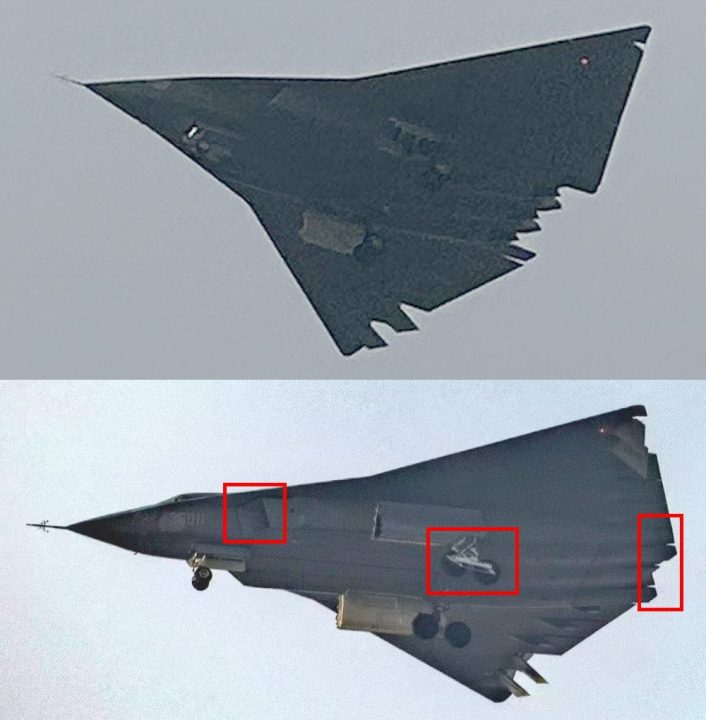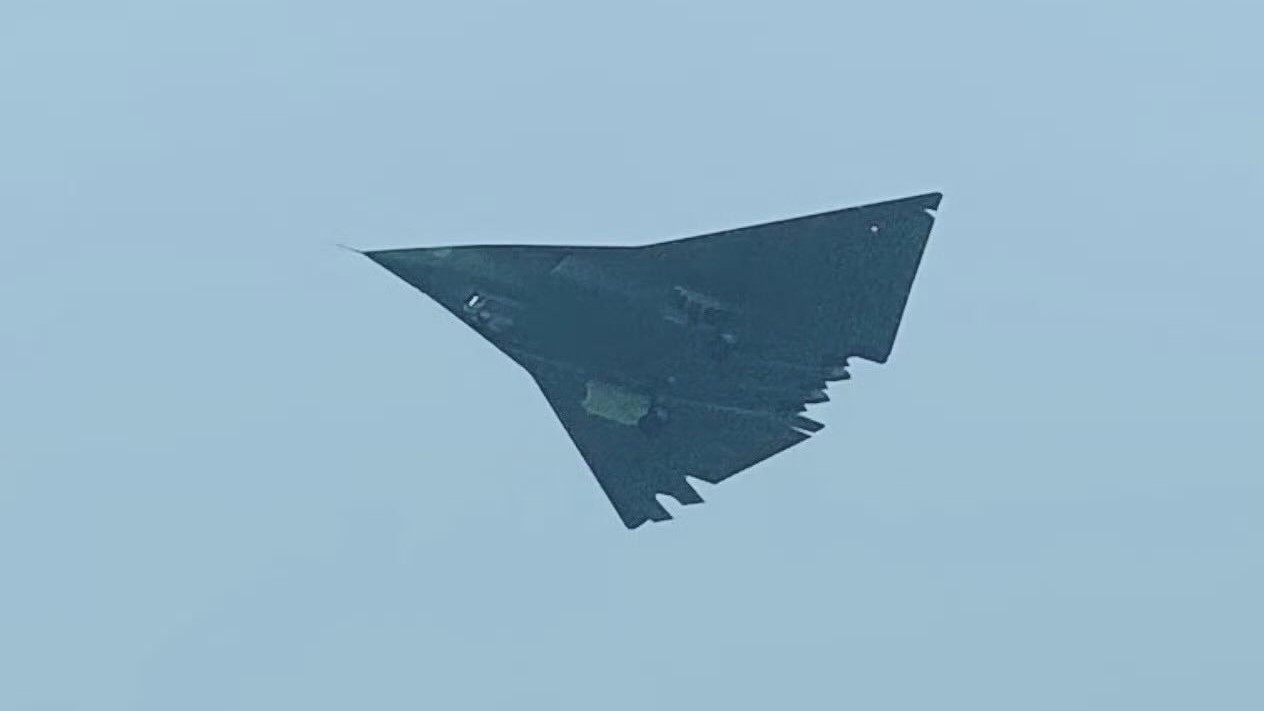Several images showing what appears to be the second prototype of the J-36 heavy fighter have begun to circulate online.
Several images showing what appears to be the second prototype of the J-36 heavy fighter have begun to circulate online. The second fuselage appears to retain the central configuration of its predecessor, such as the wide control surfaces at the rear of its fuselage and its three characteristic engines, while introducing several notable improvements ranging from intake geometry to landing gear configuration.
The photos of the second prototype arrive just over 10 months after the first, whose images began to circulate on December 26, 2024.
As it seems, the rumored second J-36 prototype was finally revealed showing some interesting changes:
1. The side intakes are checked (now DSI (?), before caret)
2. redesign the main landing gear (now two wheels side by side instead of tandem).
3. The exhausts look like TCV pic.twitter.com/qK63434yiS– @Rupprecht_A (@RupprechtDeino) October 28, 2025
The second prototype may be exploring alternative configurations, rather than committing to a final design. However, some observers on Chinese social media have hinted that this second prototype is more representative of the actual final product and that the first was more likely a demonstrator of concept.

Structural differences
Visually, the most obvious change to the new airframe is the engine injectors. The first prototype had a trough-shaped nozzle arrangement geared toward a more stealthy, combined-escape approach, much like those of the Northrop YF-23 that competed in the ATF (Advanced Tactical Fighter) program.
Instead, the second prototype adopts an F-22-style nozzle, which seems to be more oriented towards 2D-TVC (Thrust Vectoring Control). If the final solution is going to be full 2D TVC for all three aircraft engines, they will likely be willing to compromise a certain degree of stealth in exchange for greater maneuverability and control.
A few more… pic.twitter.com/UfIcgEOUWj
– @Rupprecht_A (@RupprechtDeino) October 28, 2025
In addition, the configuration of the side air intakes seems to have changed compared to those of the first prototype, which were square-shaped. Instead, the aircraft adopted DSI (diverterless supersonic inlets) or even potentially an intermediate inlet between DSI and Caret, like that of Shenyang’s next-generation fighter.
The images of the second prototype do not offer enough detail to see the characteristic ‘bump’ of a DSI inside the intake, and thus confirm that the jet now has three DSIs. However, the forward sweep of the intake definitely shows that a change has been made to its geometry.
So far there have been no photographs showing the top of the second J-36, although it can be assumed that it still retains the third DSI on the top of the fuselage for the third engine. There is still no confirmation on what engines the J-36s have been using.
Alleged second J-36 prototype.
As rumored, some changes are visible, notably refined side air intakes (DSI? I always felt the carets on the first prototype were a bit temporary…) and a revised main landing gear (dual two wheels instead of tandem).It still looks like 3 motors. pic.twitter.com/UykODCpInT
-Rick Joe (@RickJoe_PLA) October 28, 2025
The third major change that can be identified in the new images is the configuration of the main landing gear. The two main gear wheels of the new fuselage are arranged in parallel, while on the first prototype they were arranged in tandem (as on the Su-34). This modification could potentially allow more space within the aircraft’s weapons bays.
Of course, the new airframe is unlikely to be fully representative of what a final production variant could look like. Previous aircraft, such as the J-20, also evolved significantly from their original prototype before entering series production.



